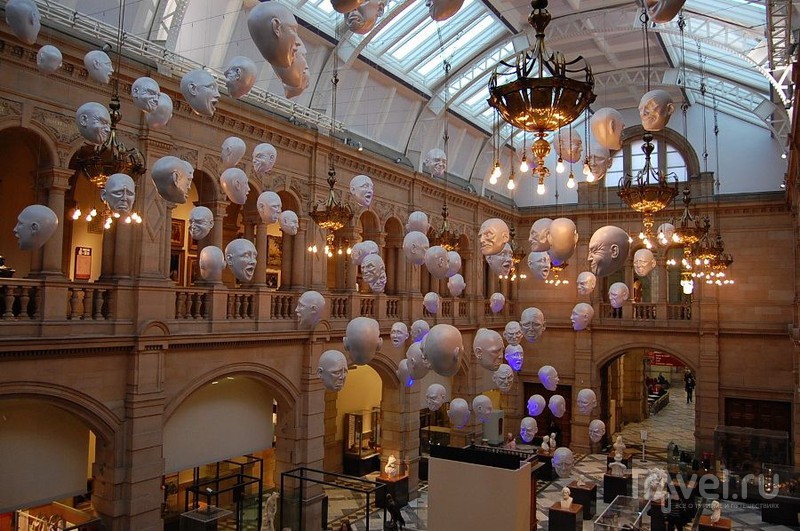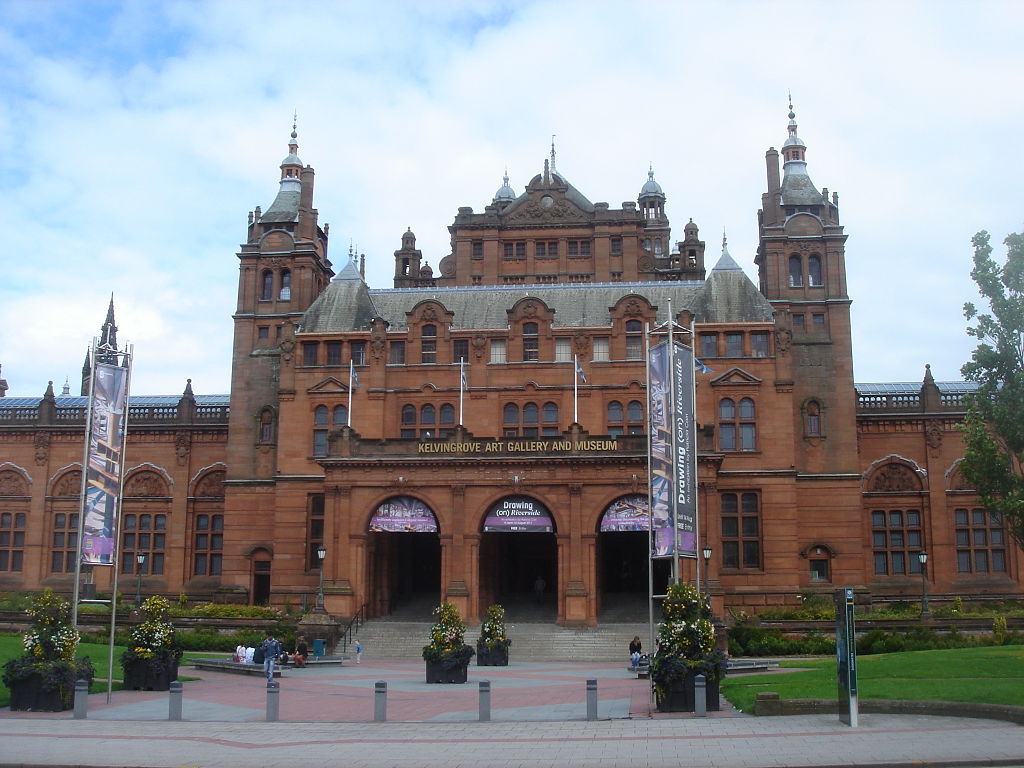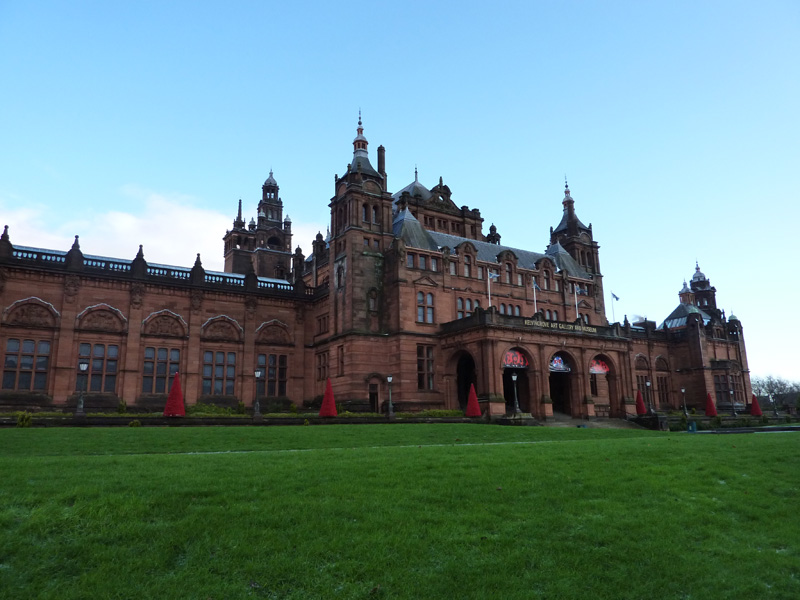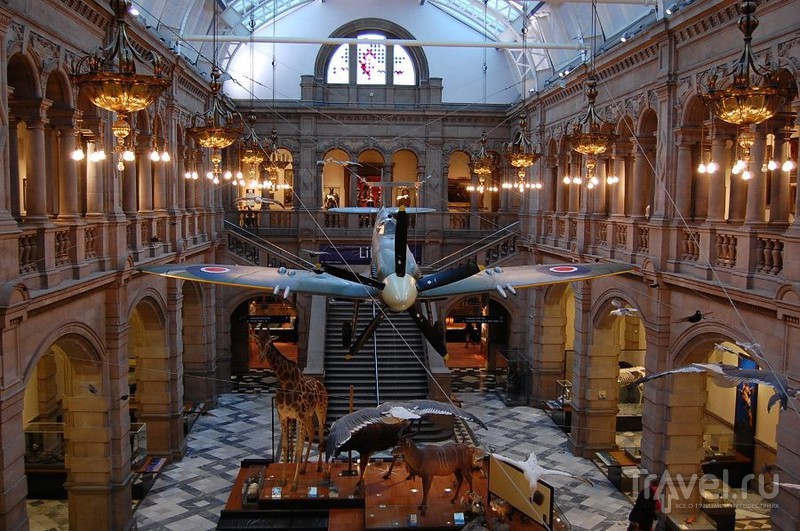The Kelvingrove Art Gallery and Museum is a museum and art gallery in Glasgow, Scotland. Since its 2003–06 refurbishment, the museum has been the most popular free-to-enter visitor attraction in Scotland,and the most visited museum in the United Kingdom outside London.
The gallery is located on Argyle Street, in the West End of the city, on the banks of the River Kelvin (opposite the architecturally similar Kelvin Hall, which was built in matching style in the 1920s, after the previous hall had been destroyed by fire). It is adjacent to Kelvingrove Park and is situated near the main campus of the University of Glasgow on Gilmorehill.
The construction of Kelvingrove was partly financed by the proceeds of the 1888 International Exhibition held in Kelvingrove Park. The gallery was designed by Sir John W. Simpson and E.J. Milner Allen and opened in 1901, as the Palace of Fine Arts for the Glasgow International Exhibition held in that year.It is built in a Spanish Baroque style, follows the Glaswegian tradition of using Locharbriggs red sandstone, and includes an entire program of architectural sculpture by George Frampton, William Shirreffs, Francis Derwent Wood and other sculptors. The centrepiece of the central hall is a massive Pipe Organ installed by Lewis & Co.
There is a popular myth in Glasgow, that the building was accidentally built back-to-front, and the architect jumped from one of the towers in despair, when he realised his mistake. This is only an urban myth. The grand entrance was always intended to face into Kelvingrove Park.
The museum's collections came mainly from the McLellan Galleries and from the old Kelvingrove House Museum in Kelvingrove Park. It has one of the finest collections of arms and armour in the world and a vast natural history collection. The art collection includes many outstanding European artworks, including works by the Old Masters (Rembrandt van Rijn, Gerard de Lairesse, and Jozef Israel), French Impressionists (such as Claude Monet, Pierre-Auguste Renoir, Camille Pissarro, Vincent van Gogh and Mary Cassatt), Dutch Renaissance, Scottish Colourists and exponents of the Glasgow School.
The museum houses Christ of Saint John of the Cross by Salvador Dalí. The copyright of this painting was bought by the curator at the time after a meeting with Dalí himself. For a period between 1993 and 2006, the painting was moved to the St Mungo Museum of Religious Life and Art.
Kelvingrove was reopened by Her Majesty Queen Elizabeth II on 11 July 2006 after a three-year closure for major refurbishment and restoration. The work cost over £28m and includes a new restaurant and a large basement extension to its display space to accommodate the 8,000 exhibits now on display.













